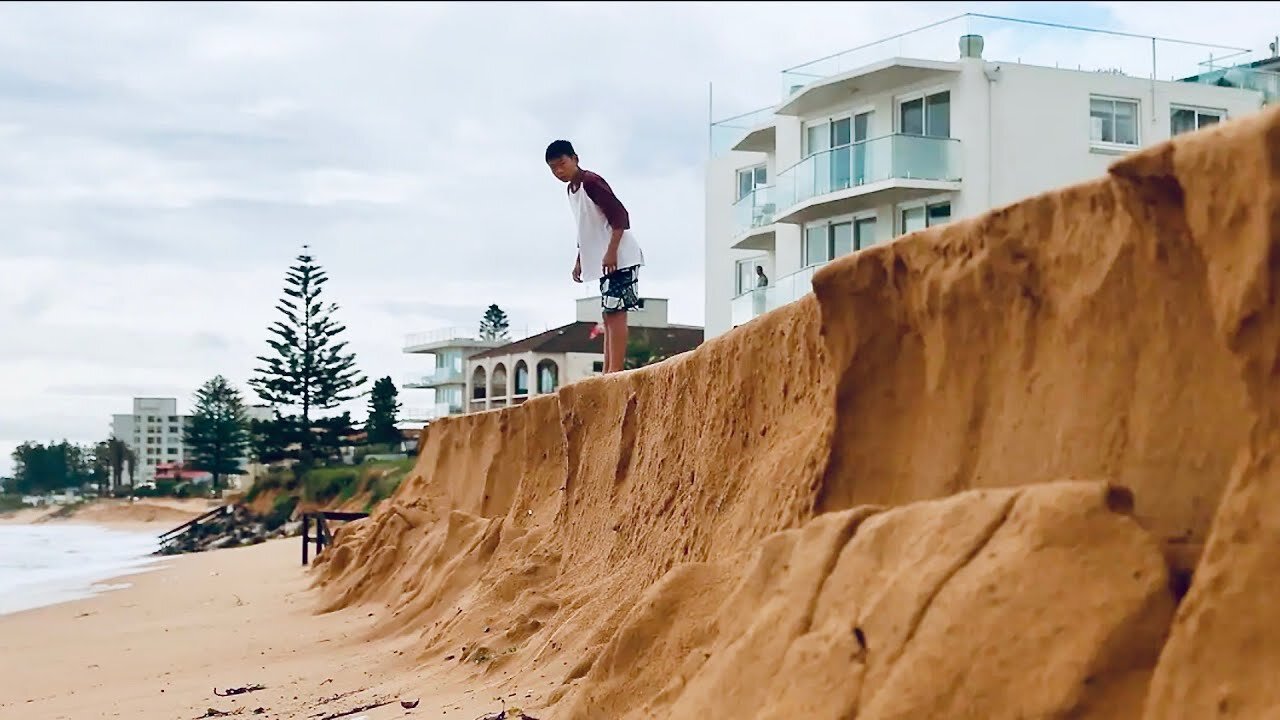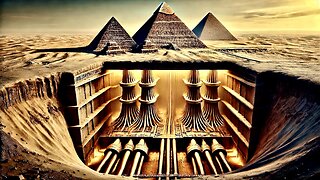Premium Only Content

The World is Running Out of Sand
Sand is the 3rd most used resource in the world behind air and water, and world is running out of sand — there’s even a violent black market for it. Sand seems like an infinite resource — especially when one imagines endless beaches and deserts — but the granular material is one of the most-consumed resources on the planet, and it could be running out. This is because it’s used in a lot of products, such as toothpaste, sunscreen, kitchen sinks, computer chips and glass. But the biggest consumer of sand comes from the construction industry, which uses it to make brick, asphalt and concrete. The big business of sand is actually referred to as the “the new gold rush,” by many experts. And the demand comes with a warning. “Sand is the essential ingredient that makes modern life possible. And we are starting to run out,” journalist and author Vince Beiser told New York Times.
The over-exploitation of sand is leading to the disappearance of beaches and islands, and it’s polluting rivers and wrecking havoc on the ocean floor. Not only that, it’s also creating a violent black market.
Why is it being used?
Sand and gravel are the most-extracted solid materials in the world, according to the United Nations Environment Programme (UNEP). Formed by erosive processes over thousands of years, it’s also mined at a rate far greater than its renewal.
Between 47 and 59 billion tonnes of sand and gravel (also known as aggregates) are mined every year, UNEP said. It’s used in concrete and asphalt for roads, buildings, parking lots, runways and many other structures.
China and India, which are leading a global construction boom, are some of the most voracious consumers of sand due to rapid economic growth.
“From 2011 to 2013, China used more cement than the United States used in the entire 20th century,” Beiser told the New York Times.
Many of these growing cities require vast amounts of sand for apartment blocks, skyscrapers and shopping malls. The demand for the resource is so boundless that certain types of construction sand that’s used in Dubai (which is a desert city), is imported from Australia.
What about desert sand?
The sand that is used in most products is found at the bottom of rivers, lakes, oceans and on beaches. Unfortunately, the sand from the desert is unsuitable for construction.
“The sand from the desert does not work as the grains are too round from wind erosion, so it does not stick together and offer strength,” said researcher and founder of sandstories.org, Kiran Pereira.
“You need angular grains that will interlock and hold concrete together. That’s why so much sand has been used from rivers and oceans,” she said.
Because desert sand is almost useless for construction, a lot of nations, like Dubai and Mauritania, which are located in deserts, actually face shortages with the resource.
For example, Dubai imported sand from Australia to build the Burj Khalifa tower, the highest building in the world at 828 metres.
Singapore is one of the largest importers of sand, using it to expand the tiny island nation in physical size by about 24 per cent since 1960, according to Bloomberg. The country uses so much sand that its once-biggest suppliers, Indonesia and Vietnam, have banned exporting there amid environmental concerns.
Why does it matter?
Sand makes up our entire civilization, according to Pascal Peduzzi, Director of GRID-Geneva at the United Nations. And we’re using so much of it that at one stage we will run out.
“The amount that we are using … it’s tremendous,” he said. “The amount we use every year is enough to construct a wall 27 metres high by 27 metres wide around the equator.”
And it has a significant impact on the environment.
“It erodes river banks, destroys beaches and the ocean, and impacts fisheries and communities,” Peduzzi added.
In some extreme cases, the illegal mining of sand has changed international boundaries, such as the disappearance of sand islands in Indonesia. In China, sand extraction has caused a dramatic decline in the water levels of Poyang Lake, the country’s largest freshwater lake.
#environment
#sand
#earth
Music: Dream Walking (Original Mix) by Dhruva Aliman
Amazon- https://amzn.to/3eLFy0P
https://dhruvaaliman.bandcamp.com/album/hello-moon
http://www.dhruvaaliman.com/
Spotify - https://open.spotify.com/artist/5XiFCr9iBKE6Cupltgnlet
-
 3:49
3:49
Knowledge Land
3 months agoIncredible Giza Pyramid Discovery - Massive Underground Structures Allegedly Found
1582 -
 2:33:14
2:33:14
Donald Trump Jr.
5 hours agoFull Coverage of Iowa Rally, Live! | TRIGGERED Ep.255
107K46 -
 LIVE
LIVE
megimu32
1 hour agoOTS: Born to Grill, Raised on Fireworks - 4th of July Throwbacks
129 watching -
 1:27:38
1:27:38
Glenn Greenwald
4 hours agoGlenn Takes Your Questions on the Ukraine War, Peter Thiel and Transhumanism, Trump’s Middle East Policies, the New Budget Bill, and More | SYSTEM UPDATE #481
32.4K13 -
 LIVE
LIVE
SpartakusLIVE
3 hours agoSHAVING my BEARD on stream TONIGHT || Chiseled JAWLINE, peak MASCULINITY, and SUAVE FRESH FACE
169 watching -
 10:10
10:10
Nicholas Bowling
2 hours agoWe Preached the Gospel to College Students… Then THEY Preached Too | UT Recap
1.16K -
 1:52:01
1:52:01
TheRyanMcMillanShow
4 hours agoTrigger Happy 2: Heavy and Deep - RMS 035
1K1 -
 1:12:18
1:12:18
Edge of Wonder
6 hours agoPresidential Hauntings, Bizarre Food & Independence Day Mandela Effect: EOW July 4th Party!
18.5K1 -
 1:55:32
1:55:32
Nick Freitas
3 hours agoDo We Need a New Declaration of Independence?
9.13K5 -
 18:11
18:11
Blackstone Griddles
3 hours agoEpisode 3 | Breakfast, Lunch, and Dinner
9.4K